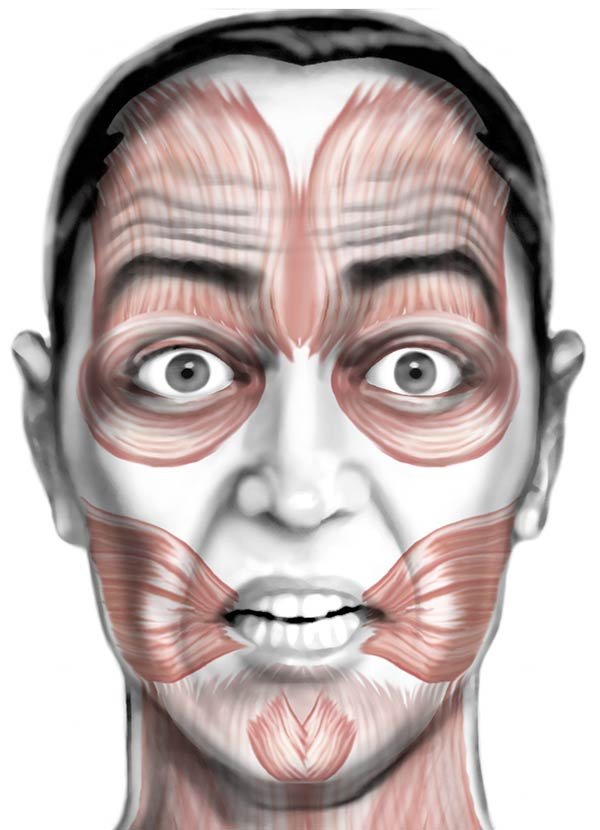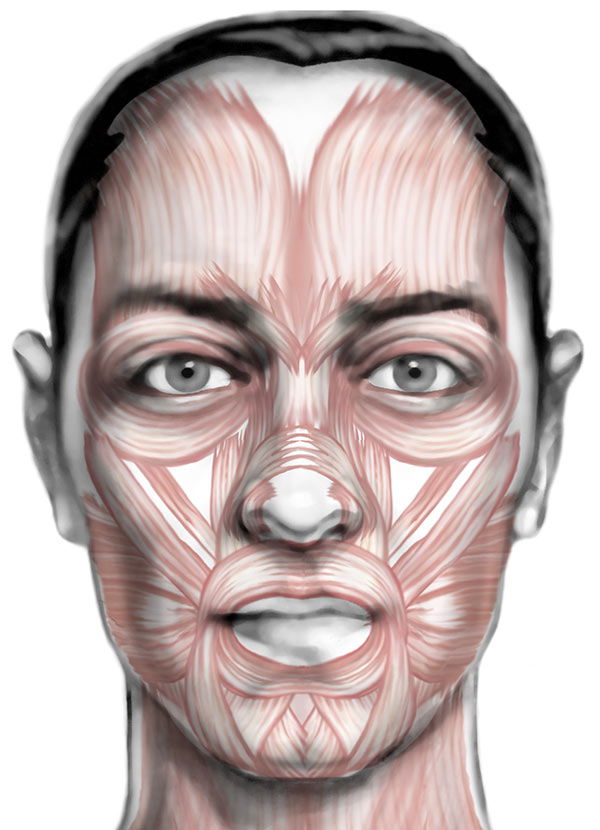Facial Expressions—The Universal Language
Human Wonders
Even before they can say a word, newborn babies can “talk” with their faces. In fact, every human being has the ability to communicate in this language, with a range of expressions no other creature can match.
When we think of muscles, we generally think of the big ones in our arms and legs—under our voluntary control—which are attached at both ends to our skeleton and allow body movement. But the skin on our face has over 40 voluntary muscles that, among other things, allow us to move our skin around to create an amazing variety of facial expressions. These facial muscles originate in the skull bones but attach to the skin of the scalp, ears, neck and face. All facial muscles are controlled by the facial nerves that emerge from the skull behind our ears and split into five branches on each side of our head.
Are They Necessary?
Facial muscles wrinkle our nose, furrow our brow, wiggle our ears, make us grimace, and even put a dimple in our chin. We might well wonder whether these muscles are really necessary. Some are indeed very important to our life, while others might fall into the category of nice but not necessary.
Some facial muscles may fail to function or even develop in some people, while others are universal, such as those around the eyes and mouth, across the forehead, and along the cheeks. While we could manage to live “stone faced” without most facial muscles, two places are vital. The circular muscles around the eyes are essential for closing our eyes (preventing possible blindness), and the circular muscle around the lips is important for suckling, eating, drinking, pronouncing words—and of course, smooching.
Can You Say This Backward?
All of our facial muscles have tongue-twisting anatomical names, but one wins the contest for the longest muscle name in the medical dictionary—the levator labii superioris alaeque nasi. This muscle is commonly called the “Elvis muscle” because it lifts the upper lip near the corner of the mouth while flaring the nostril in a sneer characteristic of Elvis Presley.
Is This Ape Insincere?
In 1872 Charles Darwin published a book titled The Expression of the Emotions in Man and Animals in which he declared that humans evolved facial and emotional expression from animal ancestors. Darwin believed not only that facial expressions are similar between man and beast, but also that they convey similar emotions. Yet while animals in general are capable of some basic expressions, such as fear and aggression, none (including apes and monkeys) show anything comparable to the range and nuance of human facial expression. For example, it is often quite easy to tell from facial expressions if a human is lying, cheating, embarrassed or insincere, but these subtleties of expression are entirely lacking in animals.
Facial Expression Is a Complicated Language
Humans are capable of expressing about 20 different facial expressions. These expressions convey specific meanings to other people much like a spoken language. But just as in verbal languages, we can lie or deceive with our facial expression. Consider an insincere smile—it’s a smile but something isn’t right. What is it that tips us off?
Fake smiles use only certain muscles going to the corners of the mouth, while real smiles involve many facial muscles, including those around our eyes. One can even be trained to discern if someone is hiding their real emotions by masking facial expression. Studies have shown that trained observers can recognize concealed emotions by detecting “micro expressions” lasting for about only a quarter second.
The Universal Language
Did the Lord’s confusion of languages at the Tower of Babel affect this “skin language”? Researcher Paul Ekman studied people from different cultures all over the world to learn if people of different cultures have the same facial expressions or if they are learned behaviors unique to each culture. He found that all humans, even from the most isolated tribes and cultures, share at least seven primary facial expressions with identical meanings: happiness, sadness, fear, anger, disgust, surprise, and contempt. Quite simply a smile indicates pleasure and a frown indicates displeasure everywhere in the world.
Facial expressions are not only the same everywhere, but they are contagious. We often notice people mimicking our own expressions. As they say, smile and the world smiles with you.
The Face of God
The Bible often uses the word countenance for facial expressions that indicate mood, emotion, or character. So if believers could see God’s facial expression, what would we see? God instructed Moses to relay His countenance to the children of Israel and indeed to all believers:
The Lord bless you and keep you;
The Lord make His face shine upon you,
And be gracious to you;
The Lord lift up His countenance upon you,
And give you peace.
Related Videos
Facial Expressions Make Us Unique
Answers Magazine
January – March 2015
This issue clears up ten common misconceptions about the Flood. Also discover the most profound evidence for creation on the planet.
Browse Issue SubscribeRecommended Resources

Answers in Genesis is an apologetics ministry, dedicated to helping Christians defend their faith and proclaim the good news of Jesus Christ.
- Customer Service 800.778.3390
- © 2025 Answers in Genesis










